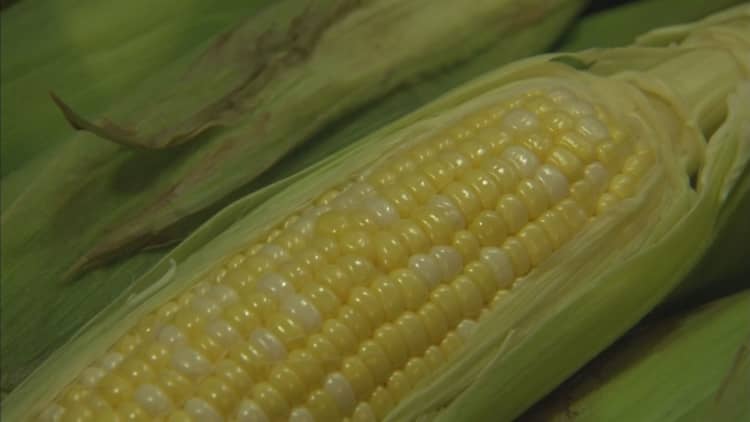For the first time ever, the U.S. government last year issued a food waste reduction goal, calling for a 50 percent cut by 2030. But how do we get there?
Food waste in America happens across the supply chain — farms, manufacturers, individual homes and consumer-facing businesses including restaurants and grocery retailers. The U.S. spends more than $218 billion growing, processing, transporting and disposing food that's never eaten — a full 1.3 percent of total GDP.
Among families, as much as 55 percent of food purchases are unplanned, which triggers overbuying and spoiled food, according to food waste research. Many families opt for bulk food purchases they don't fully consume to geta good deal on per-unit costs.
And from takeout options to grocers, many Americans have an abundance of choices and want a different kind of cuisine every night. But they may not know how to repurpose ingredients and store food properly.
Now a new report released Wednesday — a collaboration of multiple organizations including more than 30 businesses and the National Resources Defense Council — outlines solutions to lowering food waste. And beyond the environmental benefits of reduced food waste in landfills that can trigger greenhouse gas emissions that contribute to global warming, less food waste can be profitable for businesses including restaurants and the food service industry.
The report "clearly identifies actions that can be taken today, which will provide immediate economic benefits to consumers and businesses," said Sarah Vared, a food waste expert, in a statement. She's interim director of ReFED, a guide for businesses, government and nonprofits to reduce food waste.
Food waste solutions could also help generate more than 15,000 permanent jobs in recycling, composting and related fields.
Read MoreWe chuck out 31% of our food supply: How to stop the waste
And whether the food waste trigger is a farmer throwing out edible food because harvesting and processing would be unprofitable, or a housewife reaching for a 2-for-1 sale on bread or vegetables, then tossing the unused amounts, food waste ultimately costs consumers the most.
U.S. consumers collectively would save around $5.6 billion annually by cutting spending on food that's never eaten.
Business profit potential
The ReFED research suggests businesses can pocket profits by investing in solutions. For example, food service providers can retrofit dining facilities to switch to trayless dining. Smaller plates and trays and trayless dining can nudge customers to waste less in all-you-can-eat settings. (Outside the U.S., many restaurants use plates and cups that are smaller than those used in American restaurants.)
The study estimates there is $1.9 billion of annual business profit potential from the revenue and cost savings of implementing various recycling and food waste prevention strategies.
"There is a direct profit potential for business," said Dana Gunders, a scientist focused on food and agriculture for the Natural Resources Defense Council. "With money spent, money will be saved."
Restaurants and food-services facilities have the largest profit potential. But those industries are vast and highly fragmented. Menus change often. And employee turnover can be high, which makes employee training for priorities including higher waste reduction tricky, according to the report.
The research included input from a variety of food industry members including the Grocery Manufacturers Association and Feeding America, a U.S. hunger relief group.
Read MoreWhat the future of food looks like

Waste tracking and analysis can also help businesses pinpoint operational inefficiencies, and profit from food waste reduction.
Improved waste tracking and analysis can help restaurants and food service producers generate more than $1 billion in profit through lowered food purchase costs, according to the report.
Solutions for consumers
Another strategy that can help reduce food waste, particularly at home, is standardized date labels for food expiration. Date labels now are managed on a state-by-state basis.
And lack of standardization often leads to consumers throwing away food before it's spoiled, causing an estimated 20 percent of at-home food waste, according to the report and food label research.


